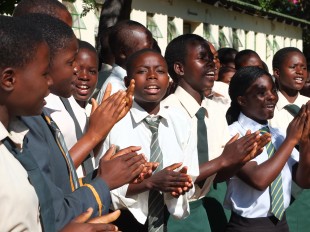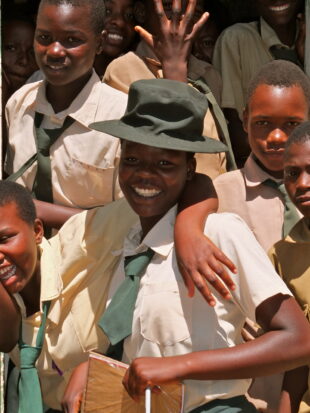
July 2013: my first week in Zimbabwe, in a taxi in Harare:
“Boss, you can tell everything by the street-lights (‘boss’ being a friendly if slightly over-respectful Zimbabwean term when addressing customers)…
“The street-lights….? I replied.
“Sure Boss, the street-lights. Everything about Zimbabwe is in the street-lights...” My cheerful chauffeur continued…..
“In the ‘80s they worked; in the ‘90s they didn’t; then they rusted; and now they’re cracked and collapsing….sometimes on cars.” He chuckled. “That’s Zim for you…”
My taxi companion continued on and on with his history lesson. I gazed out of the window, looking up at the street lights on Second Extension, the main arterial into Harare. For sure, none of them worked but rather stood as ghost-like grey pillars, sometimes precariously leaning over the road like giant cranes’ necks.
In all the places I’ve worked, the people seem to cling to a ‘Golden Age’ when things were better. For the Kosovars it’s the ‘60s in Tito’s Yugoslavia; for the Afghans the ‘70s before the Soviets invaded; and for Zimbabweans it’s the ‘80s, the first glorious decade of independence when their country was the great hope of Africa, full of resources, educated people and a lot of international goodwill.
Zimbabwe is unique in many ways. A once middle-income country it has slid to less developed status, not through war, but through a process of continual decline over the last two decades. The economic meltdown in the country in 2008 was simply culmination of this process.
When I arrived in Zimbabwe in 2013, I had low expectations. One year on, I’m glad say how wrong I was in many respects...
As Team Leader for DFID’s health, education, and water and sanitation programmes in Zimbabwe, I have been in a prime position to get a picture of the state of decline and disrepair. But what I have found has given me real cause for optimism.
The physical infrastructure still functions but is in a poor state with much of it untouched since the ‘80s. As far as the social sectors go, what I have found has heartened me; both the health and education sectors have shown remarkable resilience. On the verge of total collapse in 2008, schools, rural clinics, even secondary and tertiary hospitals are now functioning to a standard which is on a par if not higher than many in the region, excluding South Africa.
Zimbabwe, the country of contradictions, continues to baffle. A GDP per head lower than most of its neighbours, literacy rates are amongst the best on the continent. Teacher-pupil ratios of 1:30 are superior to virtually any other country in sub-Saharan Africa. Zimbabwean doctors, nurses and other medical staff are well trained by the standards of the region. The challenge is to keep them and stop the flight to more developed countries.
DFID is at the centre of the donor efforts in the social sectors, being the largest donor to UN-managed health and education transition funds. Our programmes are addressing the physical and human needs in these sectors: revitalising rural clinics; supplying drugs; renovating poorer schools; and providing ‘second-chance’ education to older children and young adults, to name but a few programmes.
One of our implementing partners, CAMFED, is using DFID funds to provide school bursaries to girls from the poorest areas of Zimbabwe. I visited the programme last June and saw first-hand the impact of our assistance - young girls in rural areas attending school and in some cases going on to set up their own businesses: a huge potential that would otherwise be lost.

Despite these positive aspects, huge challenges remain in the social sectors: children leaving school with little chance of employment; a continued brain drain to South Africa and beyond; a lack of any capital investment and much needed reforms in the public services.
But for me, at the human level, there remains a huge potential in Zimbabwe, exemplified in the resilience and resourcefulness of its people - its greatest asset. DFID’s £170 million investment in Zimbabwe’s health and education over the next 3 years is an investment in this asset.
So, I am optimistic for Zimbabwe and will remain so in the years ahead I am sure... even if I’ll be wary of parking my car under a street light in Harare!
This blog was authored by Paul Turner, Basic Services Team Leader at DFID Zimbabwe.
Keep in touch. Sign up for email updates from this blog, or follow UK in Zimbabwe on Twitter and Facebook.

Recent Comments